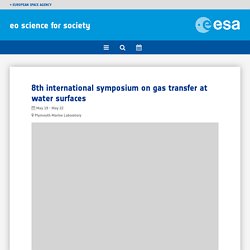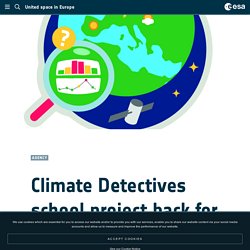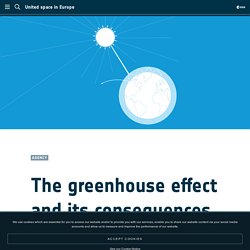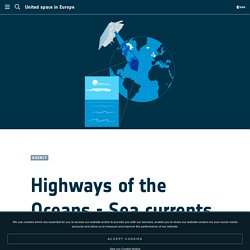

Inauguration de l'ESA Education Training Centre. - France. 8th international symposium on gas transfer at water surfaces - eo science for society. The Gas Transfer at Water Surfaces (GTWS) meeting occurs every 5 years and brings together approximately 150 scientists from countries all over the world.

The focus is on the physicochemical and biogeochemical processes that govern atmosphere-water gas exchange and fluxes, which include turbulence, shear, breaking waves, bubbles and natural and anthropogenic surfactants. Biological and chemical processes within the microlayer can also impact on gas fluxes. Many of these mechanisms also govern the exchange of heat and momentum and thus the conference is attended by many in the community studying a wide range of processes that occur across gas-water boundaries or within the near-surface layers close to those boundaries. The scope of the conference covers all domains where atmosphere and water meet, which include but are not limited to, fresh water, estuarine, mountain, glacial, marine (coastal and open ocean) and polar regions. Does climate change happen? – Climate detectives. School name: Music School of Vartholomio Student's age: 12-13, 14-15 Number of team members: 28 Summary of the project: Our team investigated the following climate parameters: 1.

The mean monthly temperatures of our region for the last 30 years. We created the relevant graphs and studied if their results were statistically important. 2. Main results: Temperatures: We calculated a tendency of increasing temperatures, but studying the 95% Confidence Interval of each slope of the relevant graphs (temperature via years) we created: for the months January, February, March, September, October, November, December there is a 95% probability this increase not to be statistically significant but this may be due to the inherent variability of the climate system. Climate detectives – Climate detectives. - Climate Detectives school project back for second edition. The call for the 2019-2020 Climate Detectives school project edition is now open!

For the second consecutive year, ESA is challenging teams of students aged between 8 and 15 years to ‘make a difference’: identify a local climate problem, investigate it by using satellite images, take measurements on the ground, and then propose a way to monitor or mitigate it. The project spans three Phases. Submissions for Phase 1 are open from now until 31 October 2019. At this stage, teams need to identify the climate problem they would like to investigate and to come up with an idea for their investigation. At key phases of the project, experts in the field of Earth observation and climate will support the teams by giving feedback on their investigation plan via email and during an online ‘ask the scientist’ event. The best projects will have the opportunity to go to ESRIN, ESA Centre for Earth Observation in Italy, visit the Φ-Experience and meet EO experts. - The greenhouse effect and its consequences - Investigating global warming.
In this activity you will analyse satellite images showing the Earth’s CO2 levels at different time periods.

You will also explore some consequences of an increased greenhouse effect. - Le Kit pédagogique "La Station spatiale internationale" - Sea ice from space - Investigating Arctic sea ice and its connection to climate. In this activity you will do a hands-on activity to find out what happens ‘when the ocean freezes’.

You will learn where in the world you can find sea ice and you will also analyse up-to-date satellite data about sea ice concentration in the Arctic. You will work like a real climate scientist! This classroom resource is part of a set of resources developed by ESA’s Education Office in collaboration with ESEROs to support the Climate Detectives project. Download: Download full classroom activity (with answers): Keywords: Earth observation, sea ice, Arctic, climate, climate change, geography, science Material: • Printed worksheet or to be consulted in the computer • Internet access • 2 jars/cups of 250ml (approximately) • Tray • Salt • Water • Colouring food ( You can make your own colouring food; try to mixture red cabbage juice with backing soda and you get a blue color) Thank you for liking You have already liked this page, you can only like it once!
- Highways of the Oceans - Sea currents and the connection to climate. In this set of activities you will explore sea currents, the highways of the oceans.

Using a hands on activity you will investigate what causes ocean currents. You will also use satellite images to analyse the temperature of the sea surface and understand why satellite observations are useful for monitoring sea currents. This classroom resource is part of a set of resources developed by ESA’s Education Office in collaboration with ESEROs to support the Climate Detectives project. Download: Download full classroom activity (with answers): Keywords: Earth observation, Sea currents, Sea surface temperature, Climate, Geography, Science, Physics Material: • Printed worksheet or to be consulted in the computer • Internet access • 2 jars/cups of 250ml (approximately) • Ice cubes • Salt • Water • Colouring food (optional) Thank you for liking You have already liked this page, you can only like it once!
- Highways of the Oceans - Sea currents and the connection to climate.